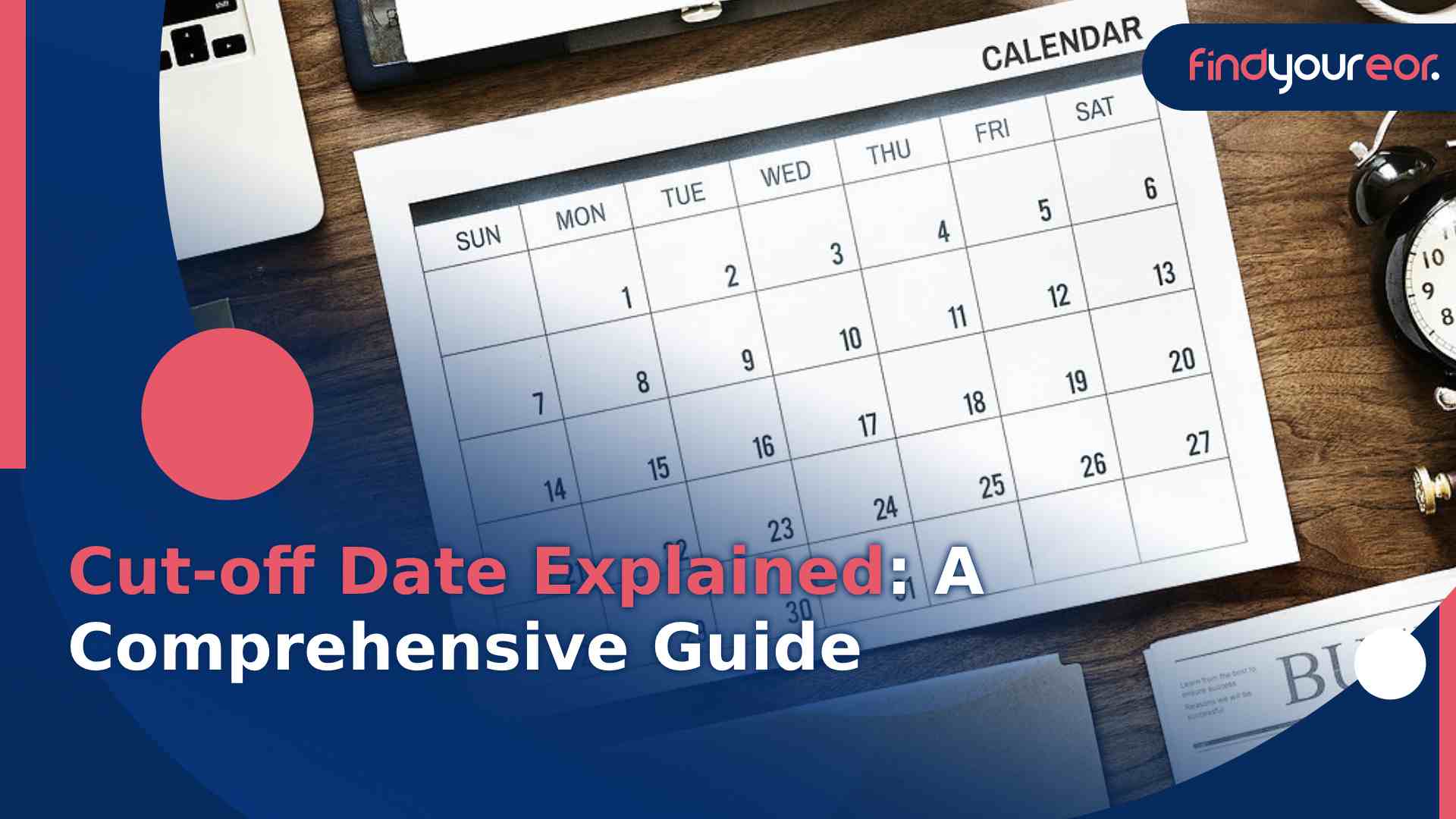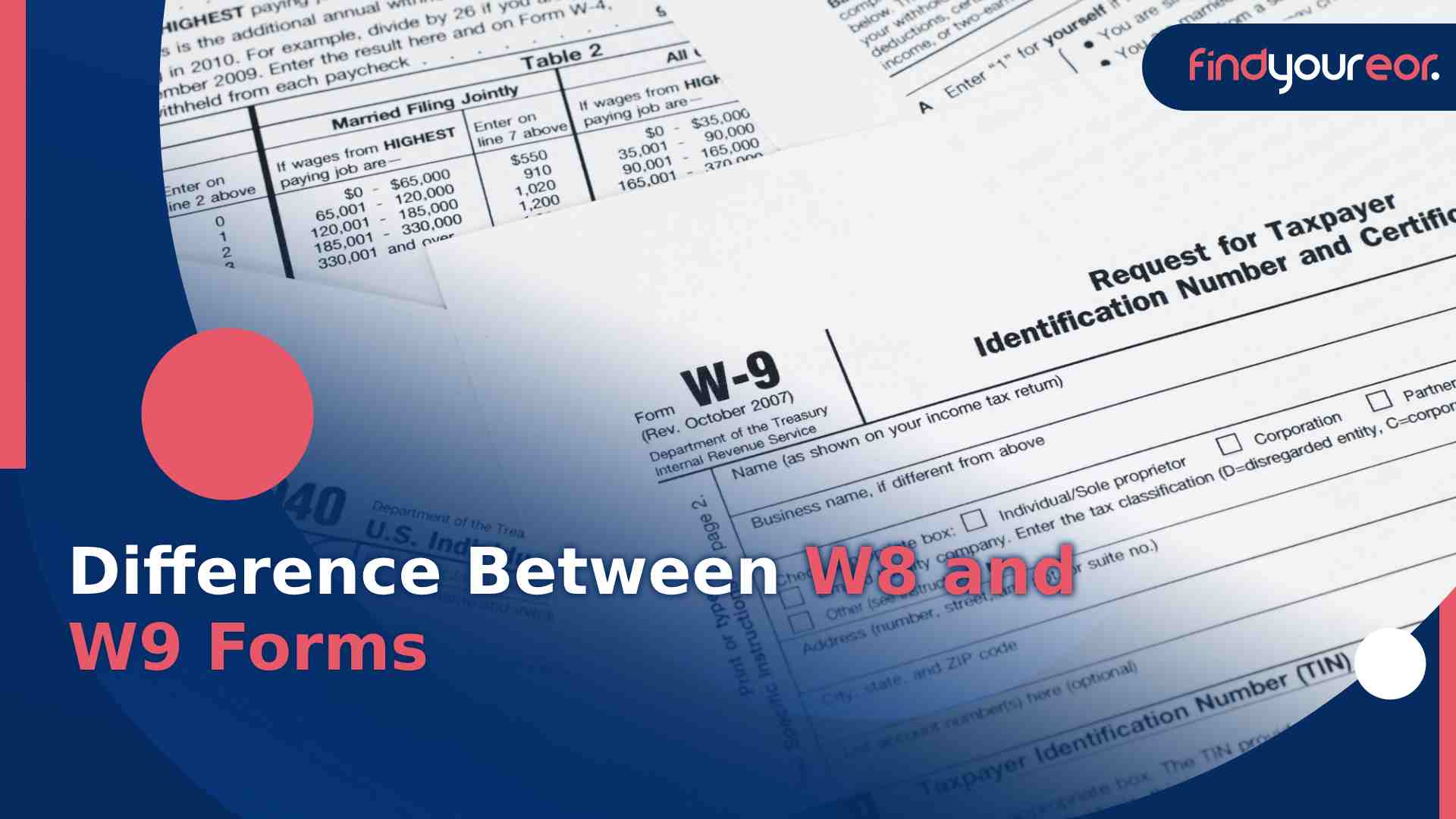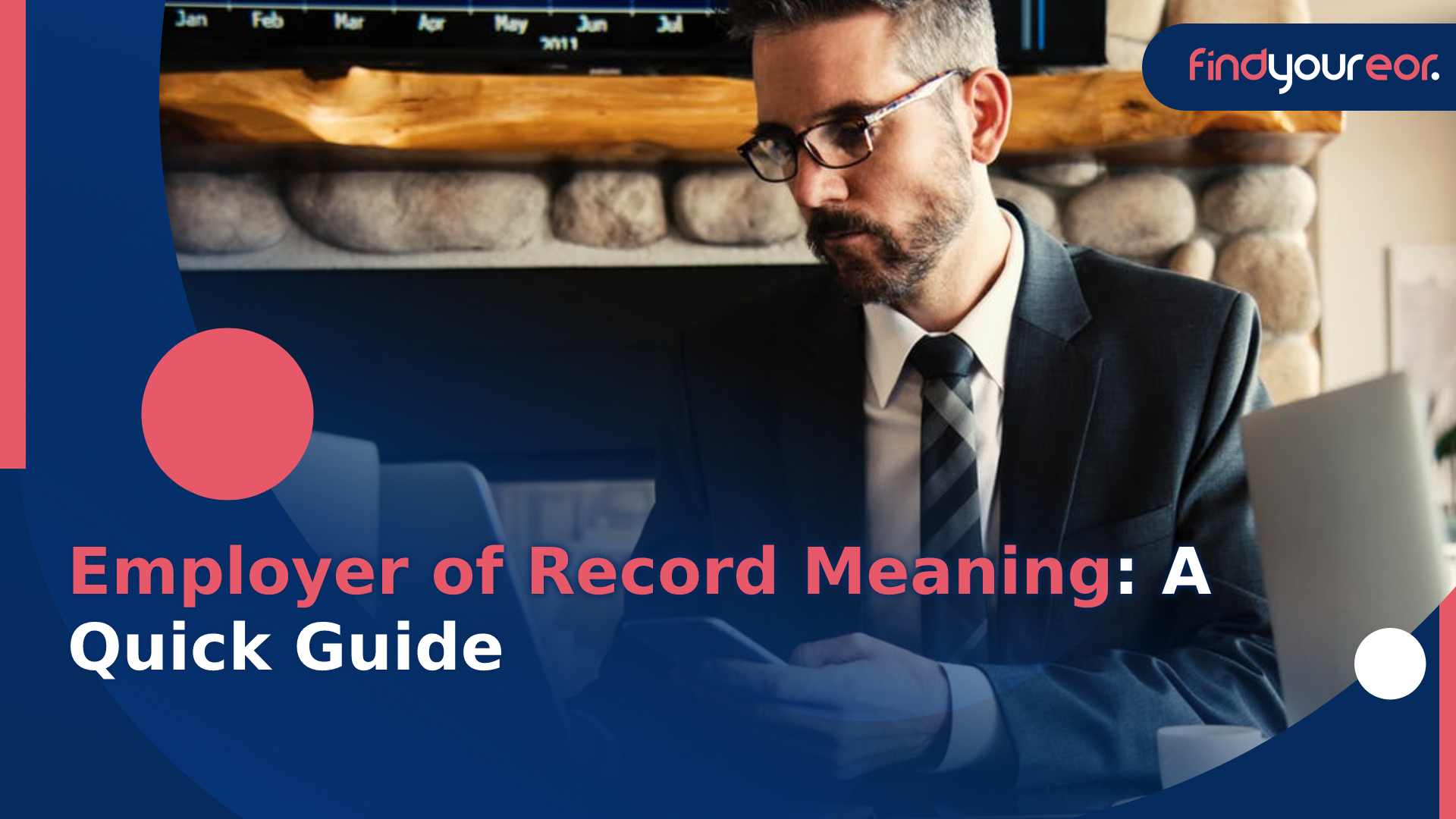Cut-off Date Explained: A Comprehensive Guide
Last update: July 19th 2023
Accounting's cutoff date concept tries to ensure that transactions and events are recorded in the relevant accounting period. It assists in calculating profit/loss without error or misrepresentation. Aside from profit/loss, the cut off idea has a significant impact on the statement of finances. For example, if the lucrative sales made in January appear in February, subsequent inaccuracies can be forecast in January.
In this article, we will be providing a comprehensive guide on what is the cut off date. A cutoff date is a period of time that serves as a due date for finishing a certain activity or procedure, or to establish eligibility or participation for a specific event or topic. Certain acts are no longer permitted or valid after the cutoff date.
Understanding Cut-off Dates and Their Significance
The concept is usually used using the term "cut-off date." It marks the conclusion of the accounting period. For illustration, the final deadline would remain the same if the accounting year ends on December 31. The financial statement is prepared using this date as the termination date. Additionally, the present accounting period includes all economic actions carried out up until and on this date. Contrarily, economic activity that occurs the following day appears in the following accounting period.
What Is a Cut-off Date?
The cutoff date, as used in accounting, establishes when new business transactions must be reported in the upcoming reporting period. For every transaction that will be reported in the month of January, for instance, the deadline is January 31. After that date, all transactions will be reported in February or in subsequent months. This is the definition of what is the cut off date in accounting cut off.
The idea is particularly relevant when doing an inventory count since it may be necessary to stop shipping and receiving after the cutoff date in order to make sure all stock transactions are accurately recorded.
Importance of Cut-off Dates in Business
To guarantee adherence to the periodicity idea of accounting, a specific cutoff date is crucial. It aids in ensuring that financial effects of economic activity are included in the same reporting period. Therefore, cut off error results when a business transaction occurs in one time frame and shows up in another.
Likewise, here we explain why the cutoff date is essential for businesses:
· Accuracy: Businesses are able to account for and report all transactions as of the cutoff date for the relevant period.
· Timing: The cutoff date may also have an effect on when revenue and expenses are incurred. Consider a scenario when a company records an exchange after the deadline. If such is the case, it will appear in it in the following accounting period. Consequently, this may result in changes to the revenue statement and make it challenging to evaluate financial success over time. As a result, the financial statements will not accurately reflect the most recent facts, which will affect their accuracy.
· Compliance: The cutoff point influences a company's tax obligations as well. An organization may lose out on exemptions that could lessen its tax burden if it selects a cutoff date that is excessively early. A business that chooses a cutoff date that will be too late risk paying taxes on revenue that has not yet been earned.
· Reputation: Finally, picking the appropriate deadline might have an impact on business interactions. If a business selects a cutoff date in advance, vendors might not grant credit or provide discounts since they might still be due money. Customers may not be pleased with the goods or services they get if a corporation selects a cutoff date that will be too late since they are contingent on stale data.
Types of Cut-off Dates
A cutoff date is a defined time period that is established as a deadline for finishing a certain activity or procedure, or to establish eligibility or admission for a specific event or topic. Certain acts are no longer permitted or valid after the cutoff date.
The idea of a cutoff date is put into effect in a variety of situations, including:
· Accounting: The end of a financial cycle (monthly, quarterly, or yearly) is frequently used in accounting as a cutoff date. This, since financial transactions that occurred after that point do not appear in the accounting records for that period. For its yearly financial accounts, a corporation can, for instance, establish a deadline of December 31.
· Finance and banking: Cutoff hours are frequently set by banks for operations like wire transfers and check deposits. After the cutoff time, transactions might still be processed the following business day.
· Legal: A cutoff date in a legal case may be the final day to submit a lawsuit or the final day to reply to a legal notification.
· Voting and events: A cutoff date may be the final day to register to participate in an event or to cast a ballot.
· Investing: The cutoff date, also known as the ex-dividend date, is the final day an investor has to hold the stock in order to be eligible for a dividend.
A cutoff date is put in place to create clarity and structure and guarantee that processes are complete on time.
Calendar-based Cut-off Dates
This implies that a cutoff date always occurs a specific amount of days after the end date of the previous period. For example, if a company's fiscal year finishes on December 31, it may have a calendar cut off date of 30 days. In this manner, the company would report all transactions taking place on or before the last day of January in the current year's financial statements and all activities that occur after January 30 in the following year's financial statements.
Time-based Cut-off Dates
Businesses may also decide to set the cutoff date as a particular day of the month. For instance, the end date will be December 31 if the business' fiscal year finishes on that day. All transactions that occurred on or before that day would be recorded in the company's financial accounts for the current year. After that date, the company would begin recording transactions for the financial statements of the next year.
Event-based Cut-off Dates
Aligning the cutoff date with the business's operational cycles is one excellent practice. For businesses that keep inventory, it might be ideal to pick a deadline that occurs after the stock has been collected but before it can be sold. This guarantees that everything is accounted for during the appropriate time period when you conduct an inventory count.
Factors Affecting Cut-off Dates
A corporation normally has a 12-month reporting period. However, a reporting period is not required to fall within the 12-month span beginning on January 1 and ending on December 31. Businesses typically choose a year end that occurs during a slack period. For instance, stores often adhere to a year-end plan when inventory is low (post-holiday season) at the end of January.
The cut-off date designates the time between the conclusion of a single reporting period and the beginning of another. Due to the possibility that cash cycles will not be complete, it is crucial in accrual accounting. Understanding what occurrences will be part of the present period of reporting and which ones will be included in the following reporting period is therefore crucial. Up until the deadline, transactions and occurrences are acknowledged.
The subsequent occurrences period runs from the cutoff date until the financial statements are authorized to be issued. The type of ensuing incident will determine whether or not the financial statements need to be adjusted. The recognition of actions and occurrences that alter the estimation of transactions made prior to the cut-off date.
Likewise, the use of a cutoff date has various advantages. It can:
· Make that a business records transactions throughout the appropriate financial period. This approach aids companies in maintaining accurate financial records, developing reasonable budgets, and making wise resource allocation choices.
· Help businesses and startups better manage their financial affairs by ensuring they make timely expense and revenue collections.
· By mandating that employees finish transaction documentation prior to the end of the quarter, you can assist organizations in preventing fraud.
· To minimize last-minute rushes or delays, make sure that firms adhere to all of their deadlines and finish all transactions on time.
· Cutoff dates assist organizations avoid confusion or work overlaps by ensuring that all tasks are completed on time.
How to Determine an Appropriate Cut-off Date
The cutoff date varies according to the company. Usually, most companies decide their cutoff date according to the current year. For example, from the first of January to the end of December. Likewise, other enterprises like to select their cutoff date according to the time or their inventory. In the same way, some businesses choose to have a combination of these options.
The company can have a continuous cutoff period of 30 days and a monthly cutoff period of the final day of the month. This would entail that the company would include all transactions that take place before the final day of the month in the financial statements for the current month and include transactions that take place after the final day of the month but before the end of the month 30 days later in the financial statements for the following month.
As long as the cut off date is constant so that accounting records are accurate, business owners can select the approach that best suits their company. The management of your business must be ongoing in order to prevent mental hurdles while the year-end accounting is being done. The key to making the year-end accounting and financial close more enduring is to keep information organized and centralized in one place.
Managing Cut-off Dates Effectively
The management/business is primarily responsible for ensuring that there are no cut-off errors when closing the books of accounts. Second, the company's auditor must make certain there is no cut-off error and that the transaction's record date matches the day it occurred, regardless of whether it was an economic or business activity.
Let us examine the cut-off concept's workings and how auditors must uphold their obligations. Different procedures must be followed by auditors when examining account balance transactions. Let us go through some crucial account balances or parts of the financial statement.
Inventory cutoff: One of the most crucial parts of a financial report is the inventory. Sales are inversely related to it. For instance, an exaggeration of inventory results if sales are not recorded within the relevant accounting period. On the other hand, if extra sales are reported during the accounting period, the inventory is understated, and the financial statement is incorrect.
Accounts receivable cutoff: The dates of the sales invoice and the shipment determine when the accounts receivable are recorded. The date of delivery of products or performance of services should coincide with the dates of the invoice and the creation of accounts receivable. The date of the purchase invoice, the goods shipment note, and the time of creating receivables accounts must therefore be compared by auditors. However, it is essential to check if products delivered on or before the deadline—in this case, December 31—have been included in the December accounting period. Similar to this, items shipped on or after January are reflected in the following accounting period.
Accounts payable cutoff: Depending on when the products were received, the accounts payable should be recorded. For instance, if products arrive in December, the financial statement for December must include them. The date on the item's receipt notice and the date the payable was created can thus be compared by auditors. Corresponding bills payable must be shown in January if goods arrive in January.
Therefore, the main goal of cut-off processes is to ensure that the transaction is correctly recorded by comparing dates.
Examples of Cut-off Dates in Different Industries
· Customers must receive goods in April that accurately reflect purchases and the emergence of receivables during that month.
· The development of accounts payable and the acquisition of goods from the vendor in April must be shown as purchases, an increase in inventory, and purchases.
· If your company provided services during January, the revenue must also be reported in January.
· The expense incurred must be shown in the accounting record for January if your company received services in January.

















.jpg)




















